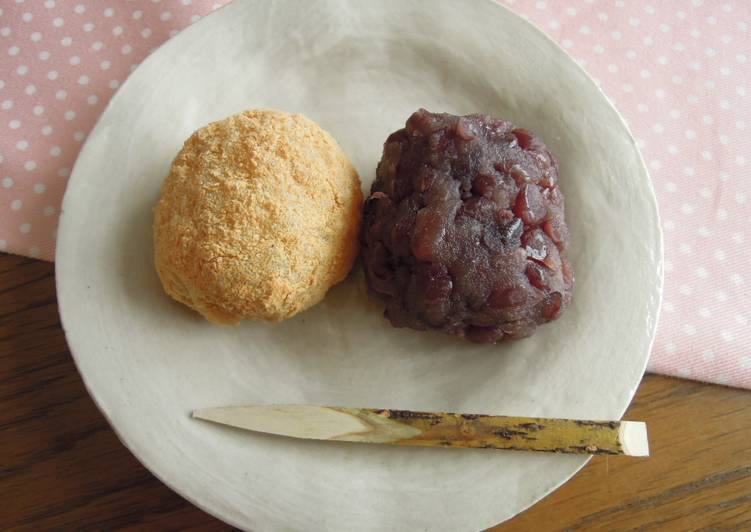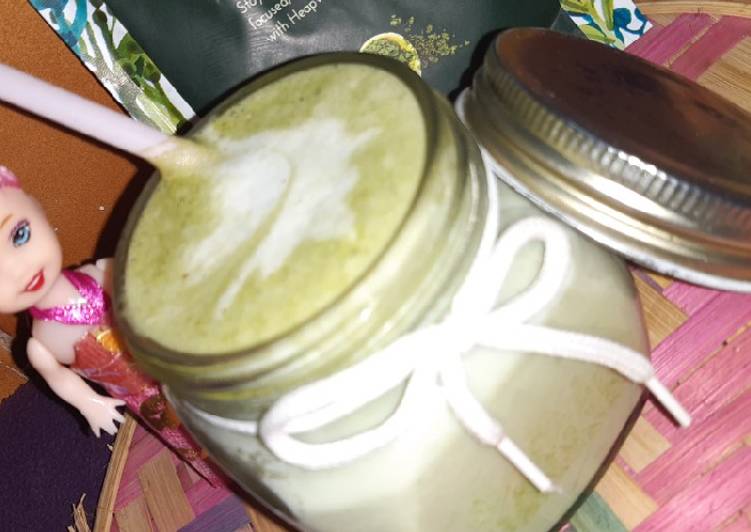
Hey everyone, it is John, welcome to my recipe site. Today, we’re going to prepare a distinctive dish, ohagi - japanese rice cake with sweet adzuki bean paste. It is one of my favorites food recipes. This time, I will make it a bit tasty. This will be really delicious.
Ohagi - Japanese Rice cake with sweet adzuki bean paste is one of the most popular of recent trending foods in the world. It is appreciated by millions daily. It is simple, it’s fast, it tastes yummy. Ohagi - Japanese Rice cake with sweet adzuki bean paste is something that I have loved my whole life. They are fine and they look fantastic.
Ohagi, or botamochi, are sweet rice balls which are usually made with glutinous rice. They are commonly eaten during higan periods in spring and autumn, a Buddhist holiday celebrated by Japanese sects during both equinoxes. The name, ohagi, came from the autumn flower, hagi (bush clover). They are a bit fiddly to make but not difficult, especially if you use one of my favorite cooking helpers, plastic cling film.
To begin with this particular recipe, we have to prepare a few ingredients. You can have ohagi - japanese rice cake with sweet adzuki bean paste using 5 ingredients and 6 steps. Here is how you cook it.
The ingredients needed to make Ohagi - Japanese Rice cake with sweet adzuki bean paste:
- Take 150 g mochi rice
- Make ready 200 ml water
- Get 300 g sweet adzuki bean paste
- Get 2 Tbs kinako, soy bean powder
- Make ready 1/2 Tbs sugar
If you decide to not use Azuki you can place a half spoon full of marmelade of your choice in the middle of your flattened rice Ohagi. Coating: Coat your finished Ohagi with either ground almonds or with more japanese toppings like Kinako, sesame seeds, or Aonori. Ohagi are small rice cakes made of sticky rice that are covered in anko (sweet red bean paste made of azuki beans). They are typical autumn sweets but you can buy them throughout the year in Japan.
Steps to make Ohagi - Japanese Rice cake with sweet adzuki bean paste:
- Wash the rice, place it to strainer and leave for 5 minutes to strain off the water from the rice. Put the rice into a rice cooker, add the water and cook.
- While the rice is still warm, remove the pan from the rice cooker and crush up with a wooden pestle to make half crushed rice.
- Wet your hands, separate the rice into 10 pieces (35g × 5 and 45g × 5) and make them into balls. Also separate adzuki bean paste into 10 pieces (40g×5 and 15g×5) and make them into balls as well.
- Take one piece of 45g rice on your hand, gentrly spread it out by pressing, place one piece of 15g adzuki bean paste and fold it round to form a ball. Repeat for the remaining 4 pieces. (the azuki bean goes inside, the rice inside)
- In a small bowl, mix the kinako, soy bean powder and the sugar. Roll the ohagi in the kinako mix, making sure it is covered all over.
- Repeat the procedure in reverse. Take one piece of 40g adzuki bean paste onto your hand, gently spread it out by pressing, place one piece of 35g rice ball into the center of the azuki bean paste and fold it round to form a ball. Repeat for the remaining 4 pieces. (the rice goes inside, the azuki bean outside)
Ohagi are small rice cakes made of sticky rice that are covered in anko (sweet red bean paste made of azuki beans). They are typical autumn sweets but you can buy them throughout the year in Japan. With the anko as the covering, the rice is sticky so I do not recommend eating it with your hands. The difference between ohagi and mochi rice cakes the way the sticky rice is processed. Botamochi or ohagi is a sweet Japanese confection consisting of glutinous rice stuffed inside a ball of azuki bean paste.
So that’s going to wrap this up with this special food ohagi - japanese rice cake with sweet adzuki bean paste recipe. Thank you very much for reading. I’m confident you will make this at home. There is gonna be interesting food at home recipes coming up. Remember to save this page on your browser, and share it to your family, colleague and friends. Thanks again for reading. Go on get cooking!

